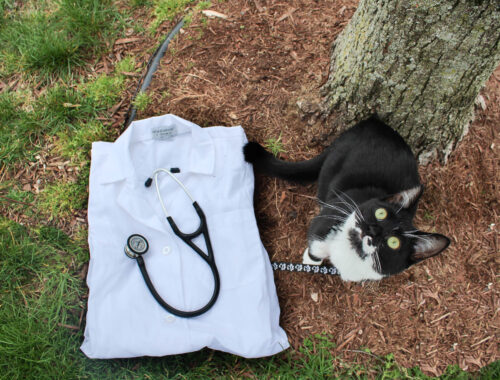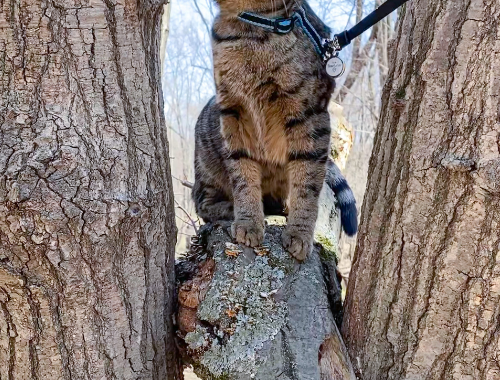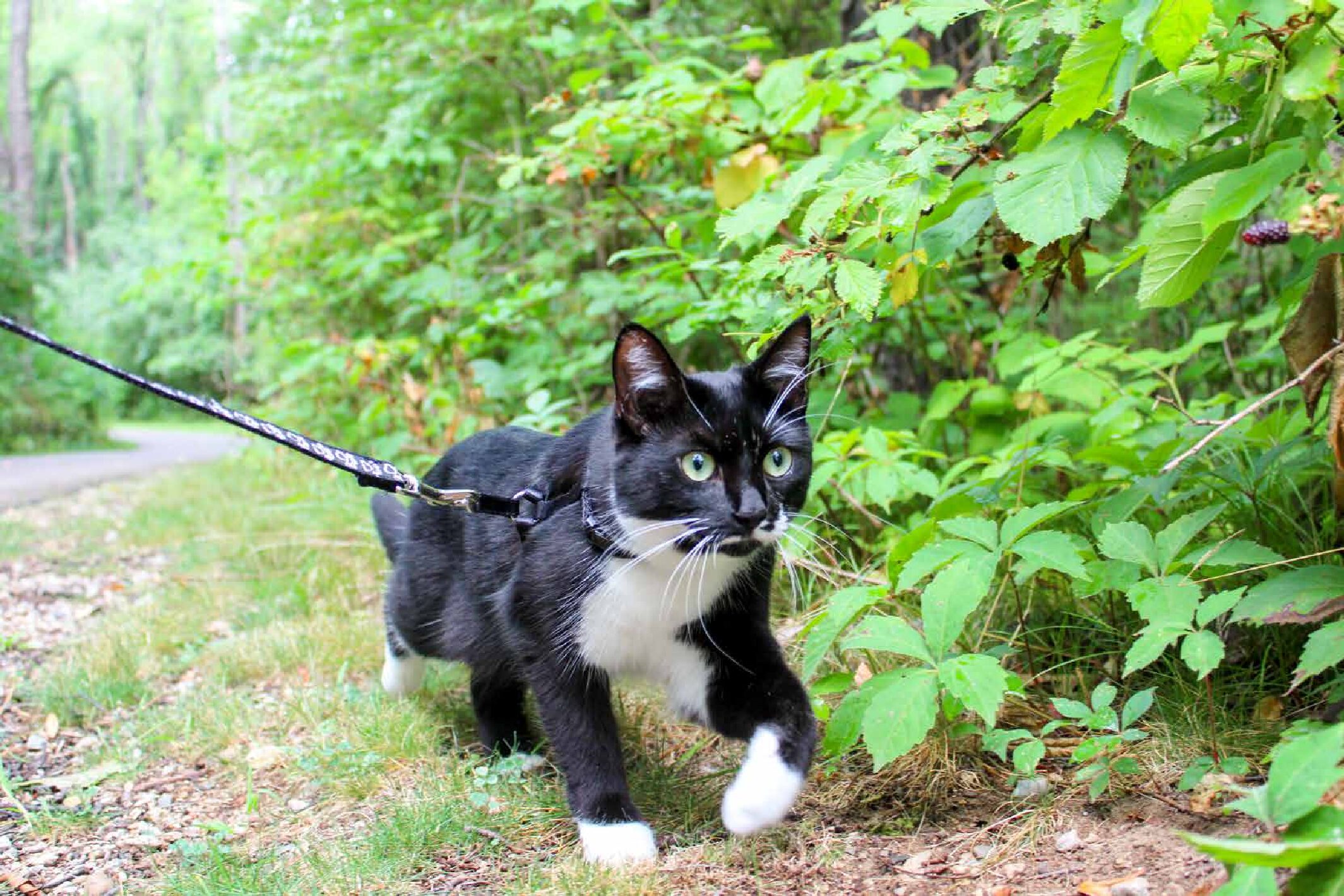
HOW TO HARNESS TRAIN YOUR CAT
First things first: there is no right or wrong way to harness train your cat!
Every cat is their own individual and will respond to different techniques and adapt at different paces. Always keep that in mind, as training can be sort of trial and error at times. If you are trying something and it is not working, switching it up may help!
When starting to harness train your cat, you need to have lots of time and lots of patience. Cats respond well to positive reinforcement. This is the best way to teach your cat that the harness is a good thing. To do so, you want to reward your cat whenever they do well with the harness. The reward will depend on your cat, but can be things such as treats, toys, pets/cuddles, etc.
When you first get the new harness
Leave it on the ground and allow your cat to go up to it on their own terms to sniff it out. Each time they sniff the harness, be sure to do the act of positive reinforcement your cat receives best. Depending on the cat, a few sniffs might be all they need, whereas others may need more time.
Wearing the harness
Once the cat is used to the harness and reacts well to it, you want to try to put it on. The first couple of times, you might not be able to buckle it, and that is okay. Remember to go slow and at a comfortable pace for your cat. Start with leaving it on for a few minutes and gradually increase the time depending on how your cat reacts and adapts to the harness. We recommend starting with 1-5 minutes at a time. Again, every time you put the harness on, you need to do your positive reinforcement.
It would be best if this is something you do every day with your cat while they are getting used to the harness.
Once your cat is comfortable in the harness, try to put it on them in the house every day for 30 minutes or so, just to ensure they are getting used to it. Not only for the feeling of wearing the harness, but the for act of putting it on and taking it off too.
Training Your Cat Commands
You may want to consider training your cat to know some other commands as well, such as come, sit, and stay. Just like dogs, cats can learn these actions too. They could come in handy if your cat gets out of the house or loose on a trail. The best way to teach your cat these “tricks” is clicker training. Check out our posts on How To Start Clicker Training Your Cat here.
Keep in mind, if you do train your cat to come, sit, and stay, they might not respond when outside if they get distracted, overwhelmed, or stressed. You can try to practice these commands outside as well, when your cat begins to get used to the setting.
Other things to keep in mind
Do not be alarmed if your cat does not walk or flops over when wearing the harness in the beginning. This is a normal reaction cats have. Cats are not used to wearing anything, so the harness can feel odd and restrictive to them at first. They feel like they cannot move in it. You need to remind them that they can! Gently pick them up and try to get them to walk. You can use their favorite toy to play with them to help distract them from the feeling of the harness. It may take multiple sessions for them to get used to the sensation of the harness, depending on the cat. Again, continue with your positive reinforcement option.
It is also a great idea to have a cat backpack that your cat can go in whenever they get scared, or just tired from walking. It is a great way for them to feel safe on walks, whether they are just starting out or not. Check out our articles on choosing a backpack and how to get your cat to like it and feel safe in it!
Going outside
Once your cat is comfortable with the harness inside, it is time to go outside! You want slow introductions, so your cat does not get scared right away. Start with a quiet area, such as your balcony, backyard, or quiet park. You want as little stimuli as possible, so your cat can just focus on the new environment.
Keep the time outside to a minimum in the beginning – about 5 minutes or so. This does depend on the cat. If your cat seems scared, it is best to bring them in so that you do not stress them out too much. However, after 5 minutes, if your cat is really enjoying themselves and responding well, you may want to let them continue!
You can try bringing a favorite toy or some treats to help them feel more comfortable outside too.
Once very comfortable in a quiet area, you can begin to introduce more populated areas. Be sure to always watch your cat and know their limits. If it becomes too much, remove them from the situation.
Keep The Weather In Mind
Weather may also be an issue depending where you live. If you welcome your new cat into your home in summer or winter, the temperatures may be too extreme to take your cat outside. We recommend you still try to start harness training in these months though, as it will pay off once the weather is nicer. You can do this by getting them used to wearing the harness around the house. Allowing your cat to go out on your balcony or porch for short periods of time is a great start too. That way, they are trained and when you can take them out, they will just have to focus on getting used to that new aspect.
Note: With extreme temperatures, you want to limit the time your cat spends outside, even once they are trained.
Conclusion:
So, remember that every cat is different. Some may get used to the harness and wear it right away, others may need multiple sessions to get used to it! You know your cat best. Do not put them in a situation that they are not comfortable with or will put them in danger. Good luck!
You May Also Like

HOW TO PICK THE RIGHT VETERINARIAN FOR YOU
May 29, 2020
Encountering Dogs When Walking Your Cat
April 9, 2021



One Comment
Mr. Bingley
Thank you for this excellent information. Looking forward to using these techniques!